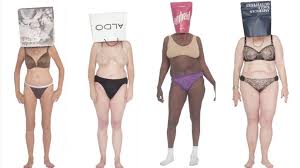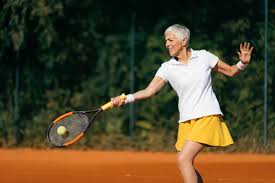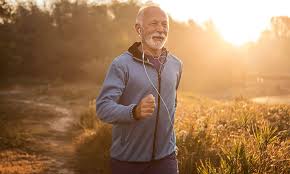6
Section One: The Fundamentals
A) Keywords
Exercise 1:
Provide a brief definition of one of the padlet keywords for this week.
| Aging habitus refers to the way a person’s experiences of growing older influence how they think, feel, and act. It’s about how social and cultural expectations of aging shape how someone sees themselves and their role in society. As people age, they internalize ideas about what it means to grow older. These ideas affect how they view their bodies, interact with others, and handle the changes that come with age. Aging habitus shows how our personal experiences with aging, as well as society’s views on aging, shape how we live and understand our older years.
|
B) The Social Significance of Aging in Sport
Exercise 2: Notebook Prompt
How is old age popularly represented today? Find an image online that you think exemplifies one defining attitude towards old age and paste in your notebook below with a brief explanation of what this image means to you.
| Old age is often represented in a variety of ways in popular culture, ranging from depictions of frailty and decline to images of active, successful aging. One defining attitude toward old age is the portrayal of older individuals as physically weak or mentally diminished, emphasizing dependency and loss of autonomy. In contrast, there are also representations that highlight seniors as vibrant and active, engaging in activities like running marathons or traveling, which challenge the stereotype that aging is solely a time of decline. I chose an image from the “Old Bags” project, which features middle-aged women with shopping bags over their heads. This representation critiques how society tends to reduce aging women to stereotypes, often rendering their individuality invisible. The bags symbolize how society obscures their identities and reduces them to a single narrative. The image resonates with me because it challenges the marginalization of older women, encouraging reflection on how society tends to overlook or stereotype aging individuals, particularly women, and how we need to change our views to reflect a more nuanced and inclusive understanding of aging.
|
Exercise 3: Notebook Prompt
What does the article (referencing another study by Dionigi) mean by its statement that sport can help aging people to simultaneously “accept and resist the ageing process” (572)? Respond by audio or text and find paste two images sourced online into your notebook showing how sport might help aging people to both accept and resist the aging process.
| The statement that sport allows older adults to both “accept and resist the ageing process” reflects the idea that physical activity can help people come to terms with the natural changes that occur with age, while also offering a way to push back against negative stereotypes about growing older. On one hand, participating in sport encourages older individuals to acknowledge and adapt to the realities of aging, such as reduced flexibility or slower recovery. Through sport, older adults can maintain a sense of identity, purpose, and strength, showing that aging does not mean disengaging from life or physical challenge.
In this image, an elderly man is seen jogging in a peaceful outdoor setting. His choice to stay active reflects an acceptance of aging by recognizing the importance of maintaining mobility and health. At the same time, it challenges assumptions that older adults are weak, inactive, or disengaged from self-care. Together, these images illustrate how sport can empower aging individuals to stay physically and socially engaged, supporting both acceptance of the aging process and resistance to ageist views. |
Exercise 4: Notebook Prompt
Who are the groups less likely to have extensive opportunities to take part in sports, according to Pike? How does privilege factor into aging and sport? (200 words max)
|
According to Pike, groups less likely to have extensive opportunities to take part in sports include older adults who experience intersecting forms of marginalization, such as those from lower socioeconomic backgrounds, racialized communities, and individuals with disabilities. These groups often face structural barriers such as lack of accessible facilities, financial constraints, limited transportation, and exclusion from mainstream sporting cultures. Additionally, older women are frequently underrepresented in sport due to gendered expectations and societal assumptions about aging and femininity. Privilege plays a significant role in shaping who has access to sport later in life. Those with economic stability, social support, and access to health resources are more likely to maintain active lifestyles and engage in organized sports. In contrast, those without such privileges may encounter more obstacles, including health issues and social isolation. Aging and sport are therefore not just individual experiences but are influenced by broader systems of inequality. Privilege determines not only the availability of opportunities but also how aging bodies are perceived and supported in sport environments. This highlights the need for inclusive policies and practices that recognize and respond to the diverse experiences of aging across different social identities.
|
Exercise 5: Padlet Discussion
Why do you think age discrimination is “reported more than any form of prejudice” with older people presented as a threat to social values and interests? Feel welcome to use video in your responses. Paste your comments (or transcript of your video) below!
|
Age discrimination is often reported more than other forms of prejudice because aging is a universal experience everyone, regardless of background, will grow older. However, in societies that prioritize youth, productivity, and physical ability, older people are often viewed as less valuable or even burdensome. This can lead to negative stereotypes that portray older adults as dependent, resistant to change, or out of touch, reinforcing the idea that they are a threat to economic progress or social stability. Media and cultural narratives often glorify youth and associate aging with decline, which fuels fear and discomfort around getting older. As a result, older people may be excluded from meaningful roles in work, sport, and social life, or blamed for economic strain on healthcare and pension systems. These attitudes reflect a deep-rooted societal discomfort with aging and mortality, making it easier to marginalize older individuals. Because this type of discrimination is so normalized, it often goes unnoticed or unchallenged, yet it’s pervasive. It affects employment, healthcare, and representation, making it one of the most widely experienced and reported forms of prejudice. Addressing ageism requires not only awareness, but also a cultural shift that values aging as a natural, meaningful stage of life.
|
B) Older Women and Sport
Exercise 6: Notebook Prompt
What differences do you see in these ads? Which one is more inclusive? How is age represented or not represented in each? Answer these questions in your notebook.
|
The Nike ad “You Can’t Stop Us” (2020) and “This Girl Can – Me Again” differ significantly in their approach to representation, particularly around inclusivity and age. The Nike advertisement focuses on athletic excellence, using a fast-paced montage of professional and elite-level athletes to convey messages of resilience, unity, and global solidarity through sport. While the ad is visually diverse in terms of race, gender, and disability, it tends to prioritize youthful, high-performing bodies. Older adults are largely absent, and the ad does not critically engage with age as a category of identity, suggesting a narrow vision of who participates in sport. Conversely, “This Girl Can – Me Again” takes a more inclusive and personal approach. It centers everyday women returning to physical activity after significant life events such as pregnancy, aging, or struggles with body image and mental health. The ad highlights a broad spectrum of bodies and abilities, and importantly, includes older women, thereby challenging dominant narratives that equate sport with youth and peak physicality.
|
Exercise 7: Notebook Prompt
In her article, “Assessing the sociology of sport: On age and ability,” Elizabeth Pike references a “trend towards a ‘feminisation of ageing’, with many women living longer than men” (573). Do you agree that aging has been “feminized” in this way? How? Answer these questions in your notebook.
|
I do agree that aging has been “feminized” in the way Elizabeth Pike describes, particularly in how later life is often framed and experienced differently for women. The trend she references, where women tend to live longer than men means that women make up a larger portion of the older population. As a result, many of the dominant cultural images and narratives surrounding aging are shaped by women’s experiences. However, this “feminisation of ageing” is not just about demographics; it also reflects how aging bodies are perceived and treated through a gendered lens. Older women often face more intense scrutiny around appearance, with societal expectations to “age gracefully” or remain youthful, which reinforces unrealistic beauty standards. In contrast, older men may be more likely to be perceived as “distinguished” rather than “past their prime.” This double standard can marginalize older women further, as they navigate ageism and sexism simultaneously. Additionally, older women are more likely to live alone, take on caregiving roles, or face financial insecurity, which also shapes how aging is experienced. Therefore, the feminization of aging speaks not only to the numerical reality of older women outliving men, but also to how aging is socially constructed through gendered expectations and inequalities.
|
Section Three: Module Mini Assignment
|
The controversy known as “The Great Peterborough Pickleball Debacle” raises important questions about aging, public space, and representation. The debate centers around a proposal to redevelop Bonnerworth Park in Peterborough, Ontario, replacing existing green space, including tennis courts and baseball diamonds, with 16 pickleball courts and expanded parking facilities. While the project aims to meet the increasing demand for pickleball, particularly among older adults, it has sparked public opposition due to concerns over noise, loss of green space, and lack of meaningful community consultation (The Narwhal, 2024). In analyzing media and social media coverage of the issue, it becomes evident that the representation of older pickleball players is shaped by both ageist assumptions and neoliberal discourses. While some coverage frames older adults as active and health-conscious, other narratives portray them as entitled or unwilling to compromise depictions that risk reinforcing stereotypes about aging populations. This reflects Elizabeth Pike’s critique of ageism in sport, where older adults are often marginalized or presented through a deficit lens, despite their increasing participation in physical activity. Additionally, the framing of pickleball as a health-promoting lifestyle choice reflects neoliberal ideals, which position individuals as solely responsible for managing their health through “active aging.” While this discourse encourages engagement, it can obscure structural barriers older adults face in accessing recreational spaces. By emphasizing self-management, it may also neglect broader social responsibilities in ensuring equitable access to sport and leisure. Ultimately, while the increased visibility of older adults in sport is promising, the way they are represented in the media particularly in the context of urban planning conflicts, requires a more critical and inclusive approach. Rather than depicting older adults as either burdensome or inspirational, narratives should reflect the complexity of aging and advocate for inclusive, community-informed solutions.
|


 This image shows an older woman actively participating in tennis. A sport that requires agility, coordination, and stamina. Her involvement demonstrates acceptance of aging by continuing to care for her health and well-being, while also resisting the stereotype that older people should slow down or avoid physical challenges.
This image shows an older woman actively participating in tennis. A sport that requires agility, coordination, and stamina. Her involvement demonstrates acceptance of aging by continuing to care for her health and well-being, while also resisting the stereotype that older people should slow down or avoid physical challenges.
